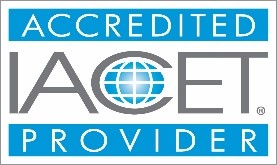Program Description
FIAS is a foundational level course is designed to develop analytical skills to assess the financial condition of institutions and to appropriately convey conclusions. This course leverages prior experience to expand into analysis of more complex bank data and assess the financial risk of an institution. The course also explores the interrelationships between the CAMELS components. The course applies critical thinking to inform and create examiner judgment and decision-making skills to reach well-supported conclusions that are communicated through written comments.
Learning Objectives
By the end of this course, students will have been taught how to:
- Analyze a financial institution using on- and off-site techniques.
- Assign and support CAMELS component ratings with written comment.
- Determine the impact of the CAMELS components in their relationship.
- Analyze UBPRs, IRRSAs, and other financial information.
- Arrive at meaningful conclusions.
- Write persuasive conclusions and support their assigned ratings.
Target Audiences
This course is designed for pre-commissioned examiners with generally between eight to ten months of risk management community bank examination experience. There should be a minimum of five months after attending Introduction to Examinations School. This course is open to appropriate staff of the FDIC and partner government regulatory agencies. This course is not open to the public or staff of private banks.
Prerequisites
Prior to attending the course, participants must have completed and have a working knowledge of the following:
- Risk Management Orientation (FDIC only)
- Introduction to Examination School (or CSBS/work experience equivalent)
- Reviewed off-site analysis materials such as UBPRs, Call Reports, IRRSAs
- Analyzed and have written draft comments for Capital and Earnings
- Completed the eight Introduction to Financial Analysis web-based trainings
Pre-course Assignment
Prior to attending the course, participants are required to complete the My Turn Bank offsite analysis (the week prior to the class is recommended), and the web-based training on Supervisory Recommendations and MRBA. Details on these assignments are provided in the Pre-course email and memo.
Delivery Method
This is a 2-week in-person, instructor-led course.
Continuing Education Credits
Continuing Education Unit (CEU): 6.6
Continuing Professional Education Unit (CPE): 78.5
More Information

For information regarding administrative policies such as complaints and refunds, please contact Corporate University, Attn: NASBA Representative Ava Livas, Room A-3025, 3501 North Fairfax Drive, Arlington, VA 22226 (703) 562-2463.
The Federal Deposit Insurance Corporation is registered with the National Association of State Boards of Accountancy (NASBA) as a sponsor of continuing professional education on the National Registry of CPE Sponsors. State boards of accountancy have final authority on the acceptance of individual courses for CPE credit. Complaints regarding registered sponsors may be submitted to the National Registry of CPE Sponsors through its website: NASBARegistry.org

The Federal Deposit Insurance Corporation (FDIC) is accredited by the International Association for Continuing Education and Training (IACET) (www.iacet.org). The FDIC complies with the ANSI/IACET Standard, which is recognized internationally as a standard of excellence in instructional practices. As a result of this accreditation, the FDIC is accredited to issue the IACET CEU.
For more information concerning course content and administration, please contact Dan Hotz.
